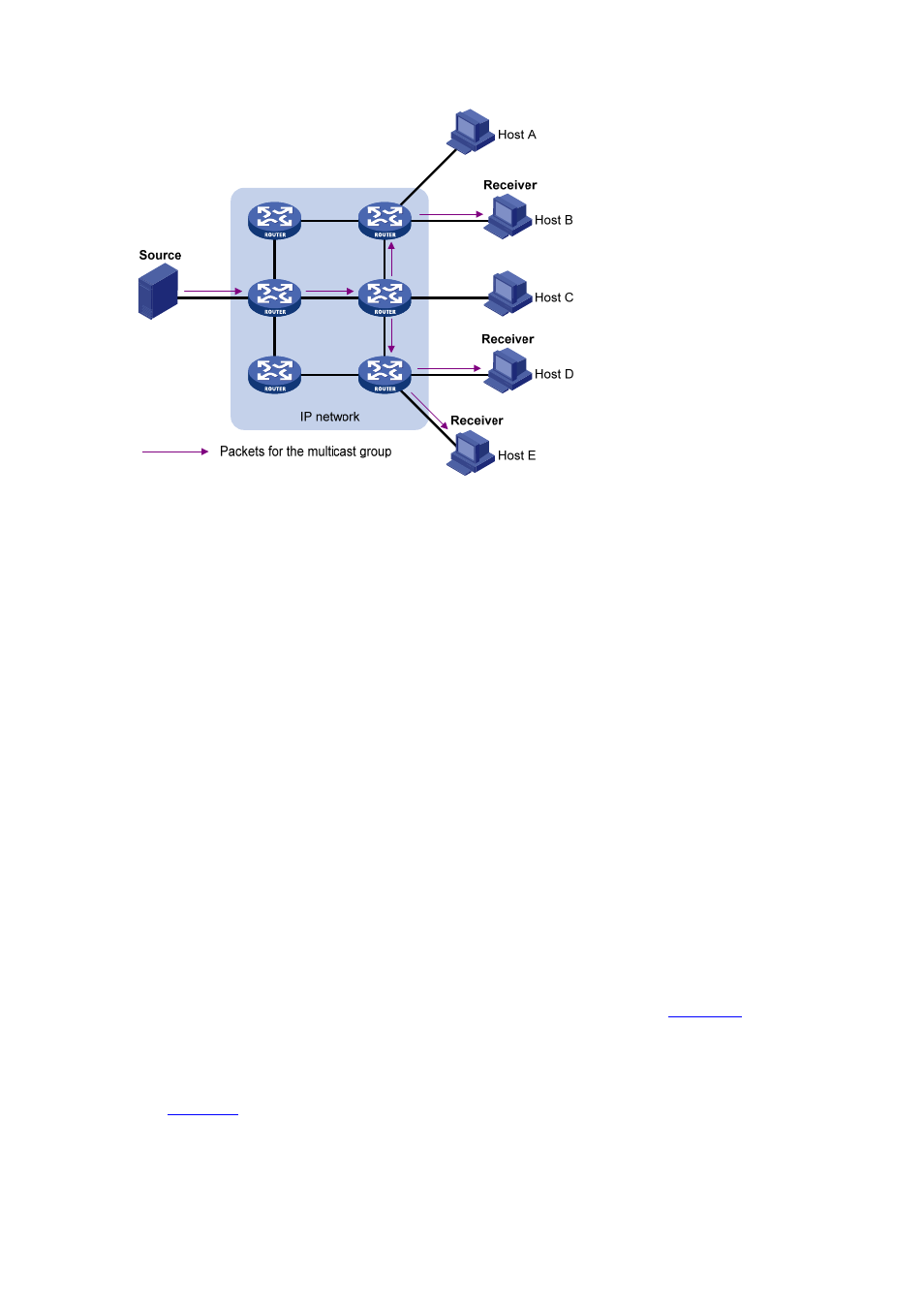Features of multicast – H3C Technologies H3C S5120 Series Switches User Manual
Page 298

1-4
Figure 1-3 Multicast transmission
The multicast source (Source in the figure) sends only one copy of the information to a multicast group.
Host B, Host D and Host E, which are receivers of the information, need to join the multicast group. The
routers on the network duplicate and forward the information based on the distribution of the group
members. Finally, the information is correctly delivered to Host B, Host D, and Host E.
To sum up, the advantages of multicast are summarized as follows:
z
Over unicast: As multicast traffic flows to the node the farthest possible from the source before it is
replicated and distributed, an increase of the number of hosts will not increase the load of the
source and will not remarkably add to network resource usage.
z
Over broadcast: As multicast data is sent only to the receivers that need it, multicast uses the
network bandwidth reasonably and enhances network security. In addition, data broadcast is
confined to the same subnet, while multicast is not.
Features of Multicast
Multicast has the following features:
z
A multicast group is a multicast receiver set identified by an IP multicast address. Hosts join a
multicast group to become members of the multicast group, before they can receive the multicast
data addressed to that multicast group. Typically, a multicast source does not need to join a
multicast group.
z
An information sender is referred to as a multicast source (Source in
source can send data to multiple multicast groups at the same time, and multiple multicast sources
can send data to the same multicast group at the same time.
z
All hosts that have joined a multicast group become members of the multicast group (Receiver in
). The group memberships are dynamic. Hosts can join or leave multicast groups at any
time. Multicast groups are not subject to geographic restrictions.
z
Routers or Layer 3 switches that support Layer 3 multicast are called multicast routers or Layer 3
multicast devices. In addition to providing the multicast routing function, a multicast router can also
